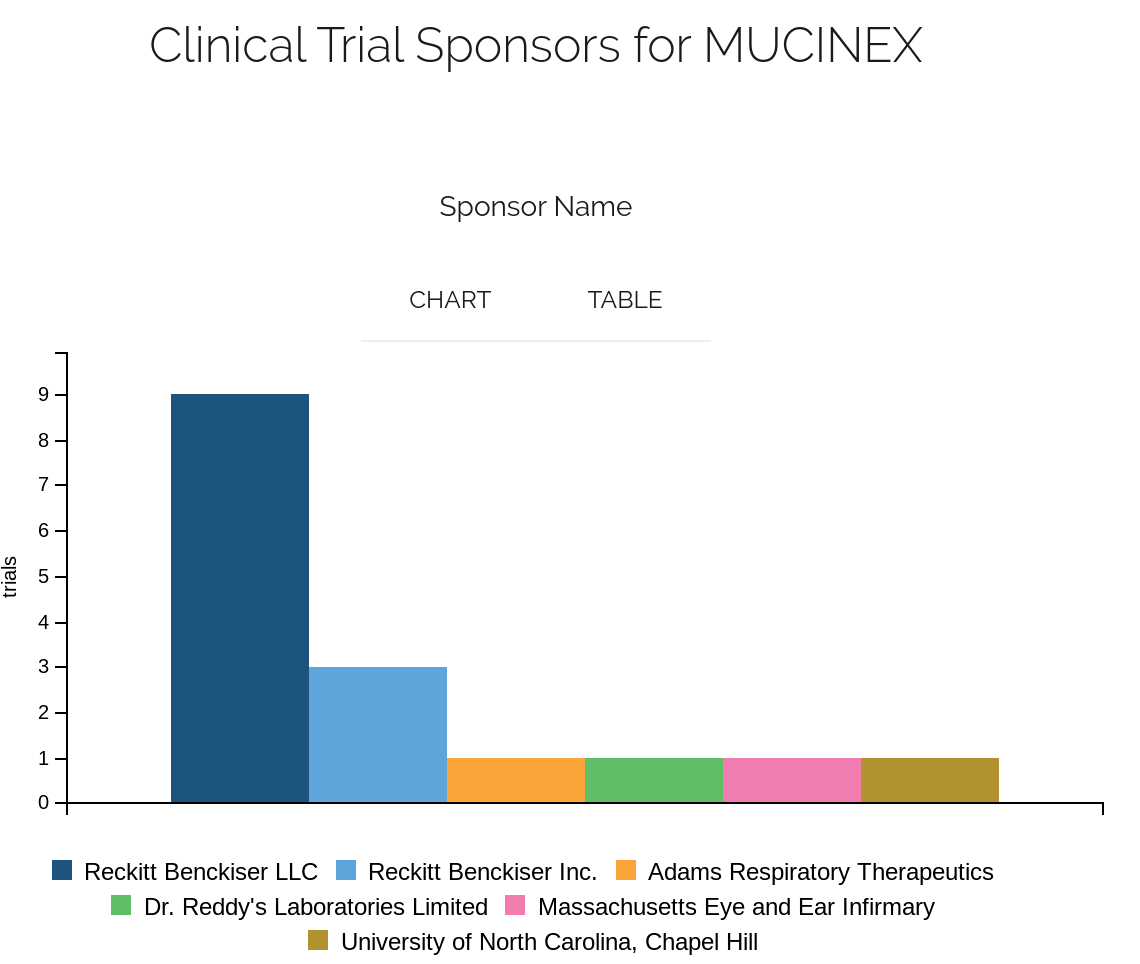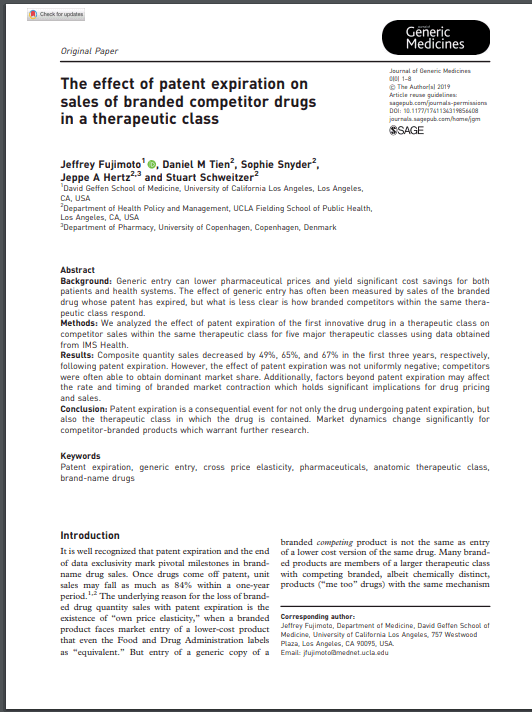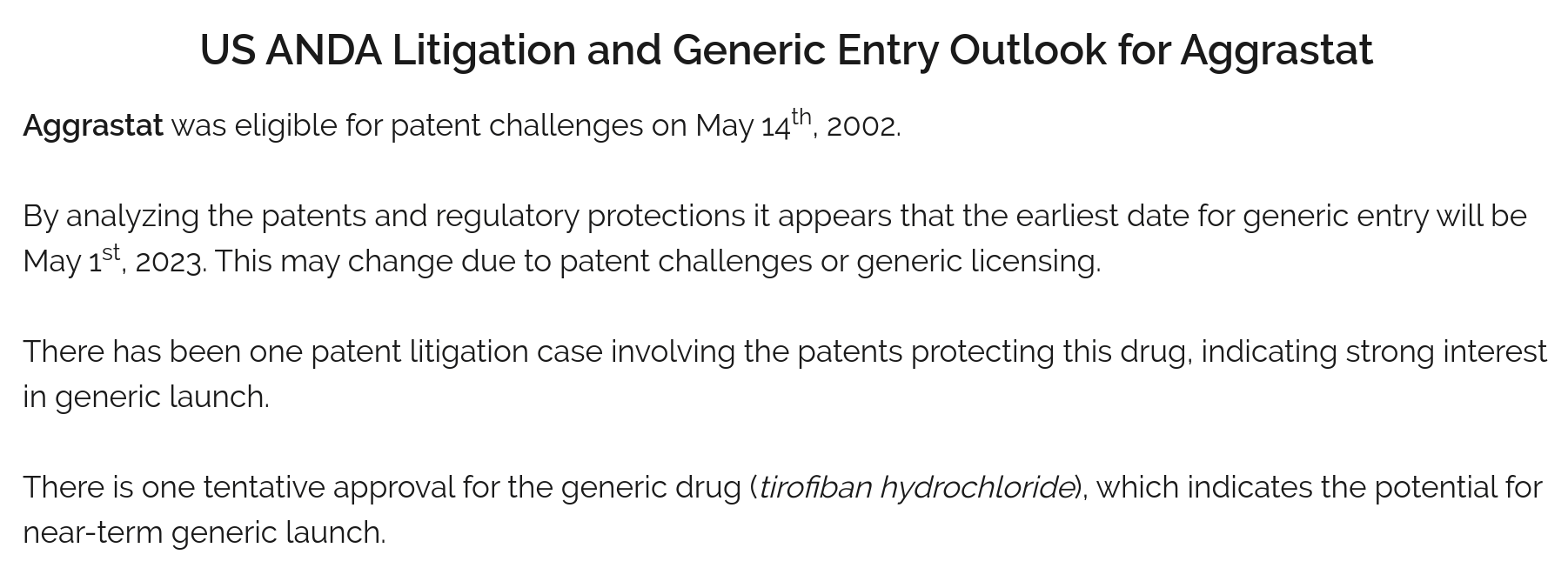I. Introduction
In the ever-evolving landscape of the pharmaceutical industry, emerging markets have become a focal point for growth and expansion. As developed markets face challenges such as patent expirations and pricing pressures, pharmaceutical companies are increasingly turning their attention to the untapped potential of emerging economies. Within this context, generic drugs play a crucial role in providing affordable healthcare solutions to millions of people worldwide.
A. The importance of emerging markets in the pharmaceutical industry
Emerging markets represent a significant opportunity for pharmaceutical companies, offering high growth potential and increasing demand for healthcare products and services. These markets are characterized by rapidly growing populations, rising disposable incomes, and expanding healthcare infrastructure[1].
Sales of the pharmaceutical markets in BRICS and MIST countries doubled in 5 years, reaching a market share of approximately 20%[1].
This shift towards emerging markets is driven by several factors, including the large populations, growing prosperity, and increasing life expectancy in these countries. As Dr. Rajiv Shah, former Administrator of USAID, notes, “Emerging markets are not just about potential; they are about real, tangible opportunities for improving global health outcomes.”
B. Overview of generic drugs
Generic drugs are pharmaceutical products that are equivalent to brand-name drugs in terms of dosage, strength, route of administration, quality, and intended use. These medications are typically produced after the patent protection of the original brand-name drug expires, allowing for more affordable alternatives to enter the market.
The importance of generic drugs in emerging markets cannot be overstated. They provide cost-effective treatment options, increase access to essential medicines, and help alleviate the burden on healthcare systems. As we delve deeper into this topic, we’ll explore the various opportunities and challenges associated with entering emerging markets with generic drugs.
II. Understanding Emerging Markets
To effectively navigate the landscape of generic drug opportunities, it’s crucial to have a clear understanding of what constitutes an emerging market and the unique characteristics that define these economies.
A. Definition and characteristics
Emerging markets are nations with economies that are progressing toward becoming more advanced, usually by means of rapid growth and industrialization. These countries typically have lower-to-middle per capita income and are undergoing significant political and economic reforms[1].
Key characteristics of emerging markets include:
- Rapid economic growth
- Increasing industrialization
- Growing middle class
- Expanding healthcare infrastructure
- Evolving regulatory environments
As Jim O’Neill, former chairman of Goldman Sachs Asset Management, puts it, “Emerging markets are not just markets that emerge; they are markets that are driving global growth and reshaping the world economy.”
B. Key emerging markets in the pharmaceutical sector
While there are numerous emerging markets worldwide, certain countries have gained prominence in the pharmaceutical sector due to their size, growth potential, and strategic importance. These include:
- BRICS countries: Brazil, Russia, India, China, and South Africa
- MIST countries: Mexico, Indonesia, South Korea, and Turkey
- Other notable markets: Vietnam, Philippines, Egypt, and Nigeria[1]
Each of these markets presents unique opportunities and challenges for generic drug manufacturers. For instance, China’s pharmaceutical market is expected to grow to $161.8 billion by 2023, making it a highly attractive destination for generic drug companies.
C. Growth potential and challenges
The growth potential in emerging markets is substantial, driven by factors such as:
- Increasing healthcare spending
- Growing middle class with higher disposable income
- Aging populations
- Changing disease patterns
- Government initiatives to improve healthcare access
However, these opportunities come with their own set of challenges:
- Complex regulatory environments
- Pricing pressures and cost-containment policies
- Competition from local manufacturers
- Intellectual property concerns
- Infrastructure limitations
Dr. Margaret Chan, former Director-General of the World Health Organization, emphasizes, “Emerging markets offer tremendous potential for improving global health, but realizing this potential requires navigating complex landscapes and overcoming significant hurdles.”
Understanding these dynamics is crucial for pharmaceutical companies looking to enter emerging markets with generic drugs. In the following sections, we’ll explore the generic drug landscape and delve deeper into the specific opportunities and strategies for success in these markets.
III. The Generic Drug Landscape
Before we dive into the specifics of emerging market opportunities, it’s essential to understand the broader context of the generic drug industry and its significance in the global pharmaceutical market.
A. Definition and benefits of generic drugs
Generic drugs are pharmaceutical products that contain the same active ingredients as their brand-name counterparts and are equivalent in terms of dosage, strength, route of administration, quality, and intended use. The primary benefits of generic drugs include:
- Cost-effectiveness: Generic drugs are typically 20-80% cheaper than brand-name drugs[1].
- Increased access to essential medicines
- Promotion of competition in the pharmaceutical market
- Reduction of healthcare costs for patients and healthcare systems
As Dr. Scott Gottlieb, former FDA Commissioner, states, “Generic drugs are a critical part of our healthcare system, providing affordable access to important medicines for millions of Americans and patients around the world.”
B. Global generic drug market overview
The global generic drug market has experienced significant growth in recent years and is projected to continue expanding. Key statistics include:
- Market size: The global generic drug market was valued at $411.6 billion in 2020 and is expected to reach $650.3 billion by 2025.
- Growth rate: The market is projected to grow at a CAGR of 9.6% from 2020 to 2025.
- Market share: Generic drugs account for approximately 80% of prescriptions filled in the United States.
C. Trends shaping the generic drug industry
Several trends are influencing the evolution of the generic drug industry:
- Patent expirations: A significant number of blockbuster drugs are losing patent protection, creating opportunities for generic manufacturers.
- Biosimilars: The development of biosimilars (generic versions of biologic drugs) is opening up new market segments.
- Technological advancements: Improvements in manufacturing processes and drug delivery systems are enhancing the quality and efficacy of generic drugs.
- Regulatory harmonization: Efforts to streamline regulatory processes across different countries are facilitating market entry for generic drugs.
- Increasing focus on complex generics: Manufacturers are moving towards developing more complex generic formulations to gain a competitive edge.
Dr. Janet Woodcock, Director of the FDA’s Center for Drug Evaluation and Research, emphasizes, “The generic drug industry is evolving rapidly, with new technologies and approaches that are expanding the range of products available and improving their quality and effectiveness.”
Understanding these trends is crucial for pharmaceutical companies looking to capitalize on opportunities in emerging markets. In the next section, we’ll explore the specific opportunities that these markets present for generic drug manufacturers.
IV. Opportunities in Emerging Markets
Emerging markets offer a wealth of opportunities for generic drug manufacturers. These opportunities are driven by various factors that make these markets particularly attractive for pharmaceutical companies looking to expand their global footprint.
A. Increasing healthcare spending
One of the most significant opportunities in emerging markets is the rapid growth in healthcare spending. As these economies develop, governments and individuals are allocating more resources to healthcare:
- Rising government expenditure: Many emerging market governments are increasing their healthcare budgets to improve access to medical services and medicines.
- Growing private healthcare sector: The expansion of private healthcare providers and insurance companies is driving demand for pharmaceuticals.
- Out-of-pocket spending: In many emerging markets, a significant portion of healthcare costs are paid out-of-pocket, creating a direct market for affordable generic drugs.
The Branded Generics In Emerging Market size was valued at USD 286.4 Billion in 2023 and is anticipated to grow at a CAGR of 7.1% from 2024-2030[2].
B. Growing middle class
The expansion of the middle class in emerging markets is a key driver of pharmaceutical demand:
- Increased disposable income: As incomes rise, people are more willing and able to spend on healthcare and medicines.
- Health awareness: The growing middle class tends to be more health-conscious and proactive about seeking medical treatment.
- Demand for quality: Middle-class consumers often seek higher-quality healthcare products, including branded generics.
Dr. Preetha Reddy, Executive Vice Chairperson of Apollo Hospitals, notes, “The rising middle class in emerging markets is not just a demographic shift; it’s a transformative force that’s reshaping healthcare demand and expectations.”
C. Changing disease patterns
Emerging markets are experiencing a shift in disease patterns, creating new opportunities for generic drug manufacturers:
- Rise of non-communicable diseases: Conditions such as diabetes, cardiovascular diseases, and cancer are becoming more prevalent[1].
- Persistent infectious diseases: Many emerging markets still face challenges with infectious diseases, creating a dual market for both chronic and acute condition treatments.
- Lifestyle-related conditions: Urbanization and changing lifestyles are leading to an increase in conditions such as obesity and stress-related disorders.
D. Government initiatives and policies
Many emerging market governments are implementing policies that favor the growth of the generic drug industry:
- Universal healthcare programs: Initiatives to provide broader healthcare coverage often rely on affordable generic medicines.
- Local manufacturing incentives: Some countries offer incentives for local production of generic drugs to reduce dependence on imports.
- Regulatory reforms: Efforts to streamline drug approval processes can facilitate faster market entry for generic products.
- Price control measures: While challenging for brand-name drugs, price controls can create opportunities for cost-effective generic alternatives.
Dr. Soumya Swaminathan, Chief Scientist at the World Health Organization, emphasizes, “Government policies in emerging markets are increasingly recognizing the crucial role of generic drugs in achieving universal health coverage and improving public health outcomes.”
These opportunities present a compelling case for generic drug manufacturers to explore and invest in emerging markets. However, capitalizing on these opportunities requires careful strategizing and navigation of the unique challenges these markets present. In the next section, we’ll discuss strategies for successfully entering emerging markets with generic drugs.
V. Strategies for Entering Emerging Markets
Successfully entering emerging markets with generic drugs requires a well-thought-out strategy that takes into account the unique characteristics and challenges of these markets. Here are some key strategies that pharmaceutical companies should consider:
A. Market research and analysis
Thorough market research is crucial for identifying opportunities and potential pitfalls:
- Demand analysis: Understand the specific healthcare needs and disease patterns in the target market.
- Competitive landscape: Analyze existing players, their market share, and product portfolios.
- Pricing dynamics: Study the pricing structures and reimbursement policies in the target market.
- Cultural factors: Consider cultural attitudes towards healthcare and medicine use.
Dr. Prathap Reddy, Founder of Apollo Hospitals, emphasizes, “In emerging markets, one size does not fit all. Each market requires a deep understanding of its unique healthcare ecosystem and patient needs.”
B. Regulatory compliance
Navigating the regulatory landscape is critical for successful market entry:
- Understand local regulations: Familiarize yourself with the drug approval process, quality standards, and labeling requirements.
- Engage with regulatory bodies: Establish relationships with local regulatory authorities to facilitate smoother approval processes.
- Adapt to evolving regulations: Stay informed about regulatory changes and be prepared to adapt quickly.
- Ensure quality compliance: Maintain high-quality standards that meet or exceed local requirements.
C. Partnerships and collaborations
Forming strategic partnerships can provide valuable local knowledge and resources:
- Local manufacturers: Partner with local drug manufacturers to leverage their production capabilities and market knowledge.
- Distribution networks: Collaborate with established distributors to ensure effective product reach.
- Healthcare providers: Build relationships with hospitals, clinics, and pharmacies to increase product visibility and adoption.
- Research institutions: Collaborate with local research institutions for product development and clinical trials.
Outsourcing of development and manufacturing to companies located in emerging economies has been a strategy of international pharmaceutical companies looking to reduce costs and potentially gain access to these growing markets[4].
D. Localization and customization
Adapting products and strategies to local needs can significantly enhance market success:
- Product formulations: Consider local preferences for dosage forms and packaging.
- Branding strategies: Develop branding that resonates with local cultural values and perceptions.
- Pricing strategies: Implement tiered pricing strategies to cater to different market segments.
- Education and awareness: Invest in patient and healthcare provider education to build trust and awareness for generic products.
Dr. Kiran Mazumdar-Shaw, Chairperson of Biocon, notes, “Success in emerging markets often hinges on the ability to localize not just products, but entire business models to suit the unique needs and constraints of each market.”
Implementing these strategies requires a balance of global expertise and local insight. Companies that can effectively combine these elements are more likely to succeed in the complex and dynamic environment of emerging markets.
In the next section, we’ll take a closer look at some of the key emerging markets for generic drugs, exploring their specific characteristics and opportunities.
VI. Key Emerging Markets for Generic Drugs
While there are numerous emerging markets with potential for generic drug entry, certain countries and regions stand out due to their size, growth potential, and strategic importance. Let’s explore some of these key markets:
A. BRICS countries (Brazil, Russia, India, China, South Africa)
The BRICS nations represent some of the largest and fastest-growing pharmaceutical markets among emerging economies:
- Brazil:
- Latin America’s largest pharmaceutical market
- Strong government support for generic drugs through the “Farmácia Popular” program
- Opportunities in chronic disease treatments and biosimilars
- Russia:
- Emphasis on local production under the “Pharma 2020” strategy
- Growing demand for cardiovascular and oncology treatments
- Potential for branded generics due to consumer preference for known brands
- India:
- World’s largest provider of generic drugs
- Strong domestic market and export capabilities
- Opportunities in complex generics and biosimilars
- China:
- World’s second-largest pharmaceutical market
- Recent reforms favoring generic drug quality and accessibility
- Growing demand for chronic disease treatments
- South Africa:
- Largest pharmaceutical market in Sub-Saharan Africa
- Government initiatives to increase access to essential medicines
- Opportunities in HIV/AIDS and tuberculosis treatments
Dr. Dilip Shah, Secretary-General of the Indian Pharmaceutical Alliance, states, “The BRICS countries represent not just markets, but potential hubs for innovation and production in the generic drug industry.”
Citations:
[1] https://www.ncbi.nlm.nih.gov/pmc/articles/PMC5717296/
[2] https://www.precisionbusinessinsights.com/market-reports/branded-generics-in-emerging-market
[3] https://kpmg.com/kpmg-us/content/dam/kpmg/pdf/2023/generics-2030.pdf
[4] https://windrosecg.com/posts/emerging-markets-series-topic-3
[5] https://lumanity.com/perspectives/potential-impact-of-the-ira-on-the-generic-drug-market/
[6] https://www.pharmacytimes.com/view/emerging-markets-offer-pharma-its-next-growth-opportunity
[7] https://www.linkedin.com/pulse/finding-generic-drug-entry-opportunities-emerging-markets-friedman
[8] https://www.worldscientific.com/doi/pdf/10.1142/S021903031100067X?download=true






















